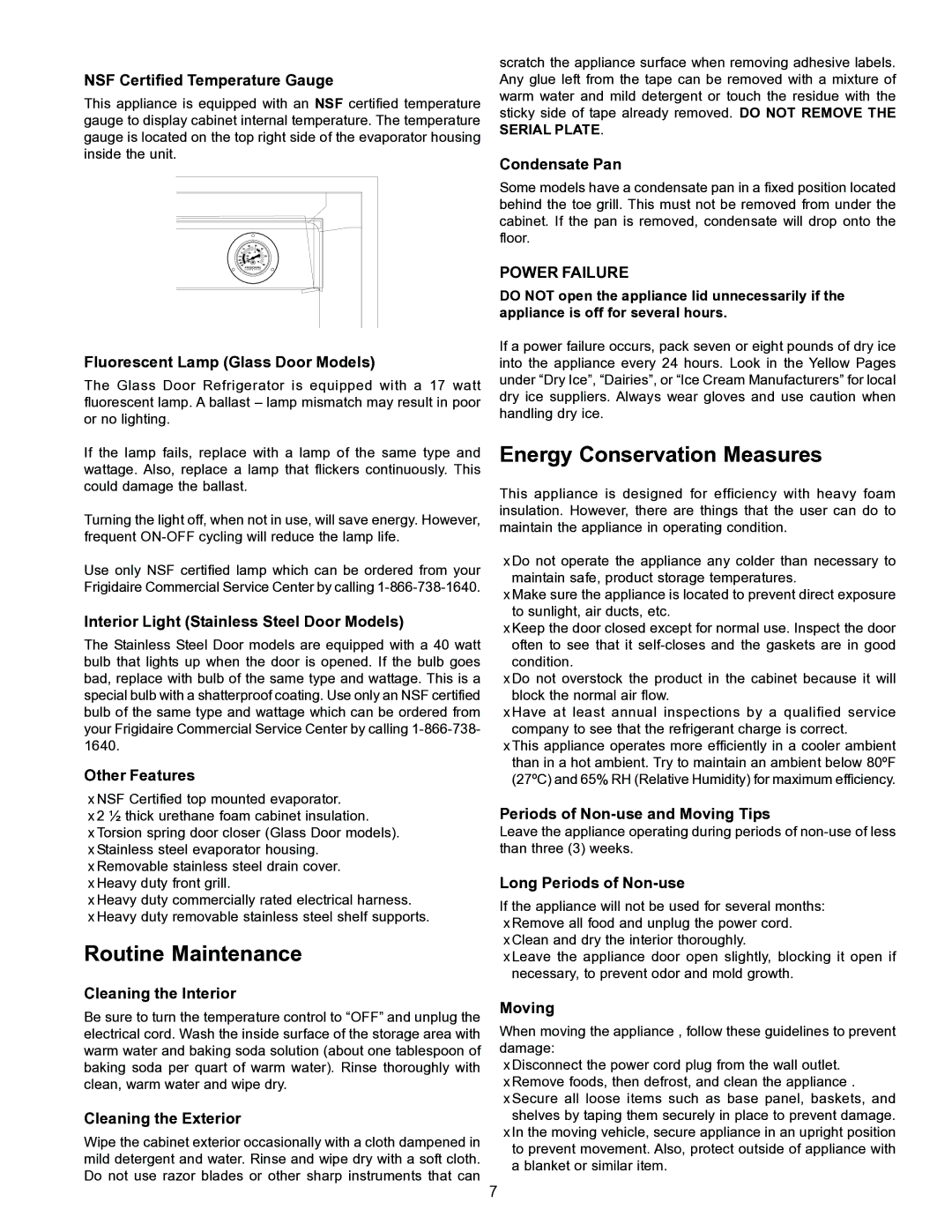GLASS DOOR REFRIGERATOR specifications
The Frigidaire Glass Door Refrigerator is a modern and innovative appliance that combines style and functionality, making it an excellent choice for both commercial and home use. This refrigerator features a sleek glass door design, offering a clear view of its contents while enhancing the aesthetic appeal of any space. With its emphasis on performance and efficiency, the Frigidaire Glass Door Refrigerator stands out as a preferred option for those seeking both practicality and elegance.One of the main features of the Frigidaire Glass Door Refrigerator is its energy-efficient operation. Equipped with an advanced cooling system, this model maintains ideal temperatures, ensuring that food and beverages are stored at their freshest. The refrigerator's energy-saving technology not only helps to reduce electricity bills but also contributes to a more sustainable environment.
Among its notable technologies, the Frigidaire Glass Door Refrigerator includes an auto-defrost feature that eliminates the hassle of manual defrosting. This technology ensures that frost buildup is minimized, maintaining optimal cooling performance while allowing for easy maintenance. Additionally, the adjustable shelving allows users to customize the interior layout according to their storage needs, accommodating various sizes of items from towering soda bottles to wide platters.
The design of the refrigerator incorporates bright LED lighting, illuminating the interior while consuming less energy than traditional bulb lighting. This feature not only enhances visibility but also adds a modern touch to the overall look of the appliance. The glass doors are engineered with tempered glass, offering durability and security while maintaining an attractive appearance.
Furthermore, the Frigidaire Glass Door Refrigerator is equipped with a reliable temperature management system that ensures consistent cooling performance, even during busy hours. The unit operates quietly, allowing it to fit seamlessly into any environment without causing disruptions.
In summary, the Frigidaire Glass Door Refrigerator is a stylish and efficient appliance that features energy-saving technologies, customizable storage options, and advanced cooling systems. Its tempered glass design not only elevates the aesthetic of your space but also provides convenience and easy access to stored items, making it an appealing choice for homeowners and businesses alike. With this refrigerator, users can enjoy freshness, performance, and a modern touch in their kitchens or commercial settings.

